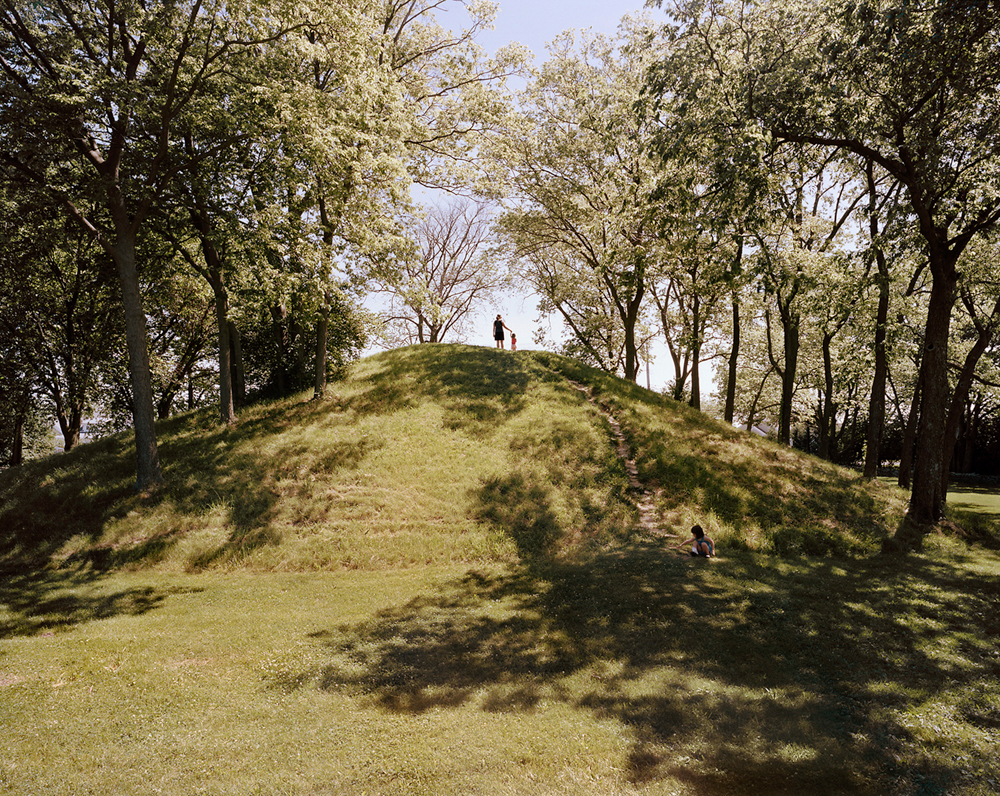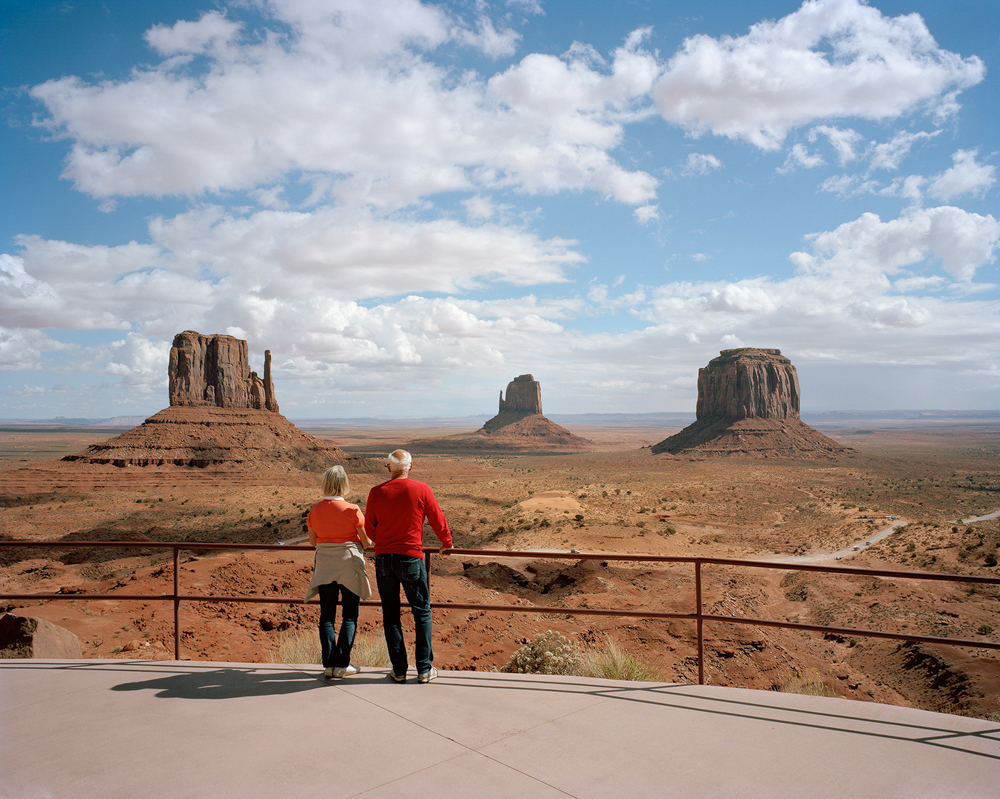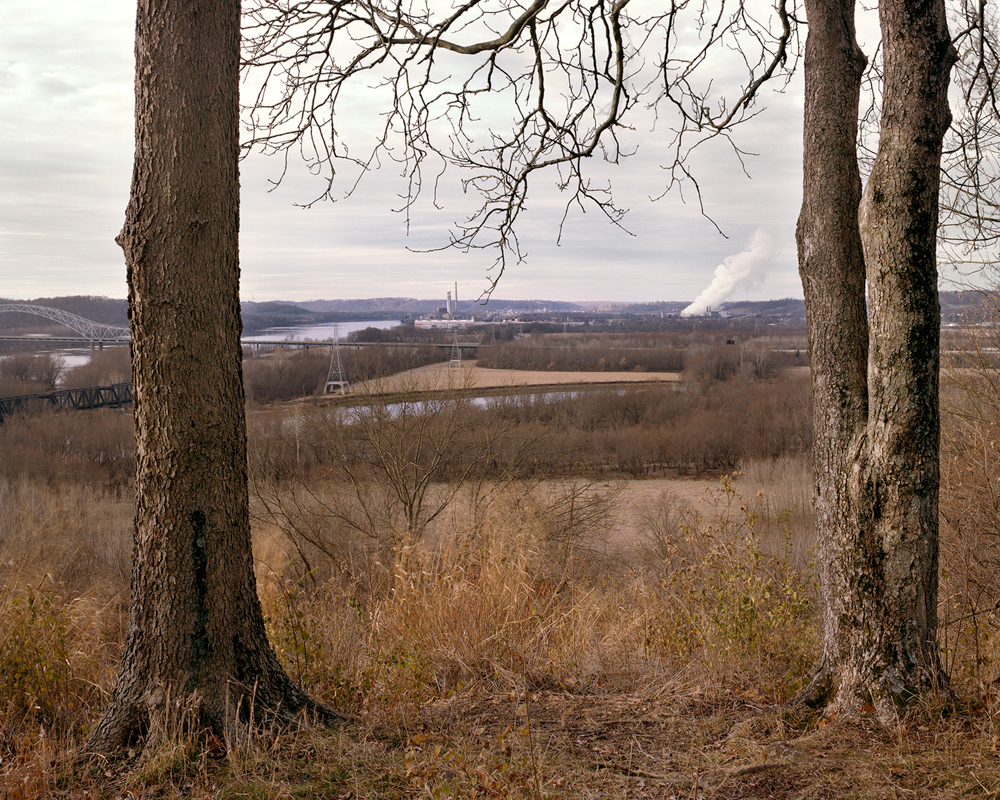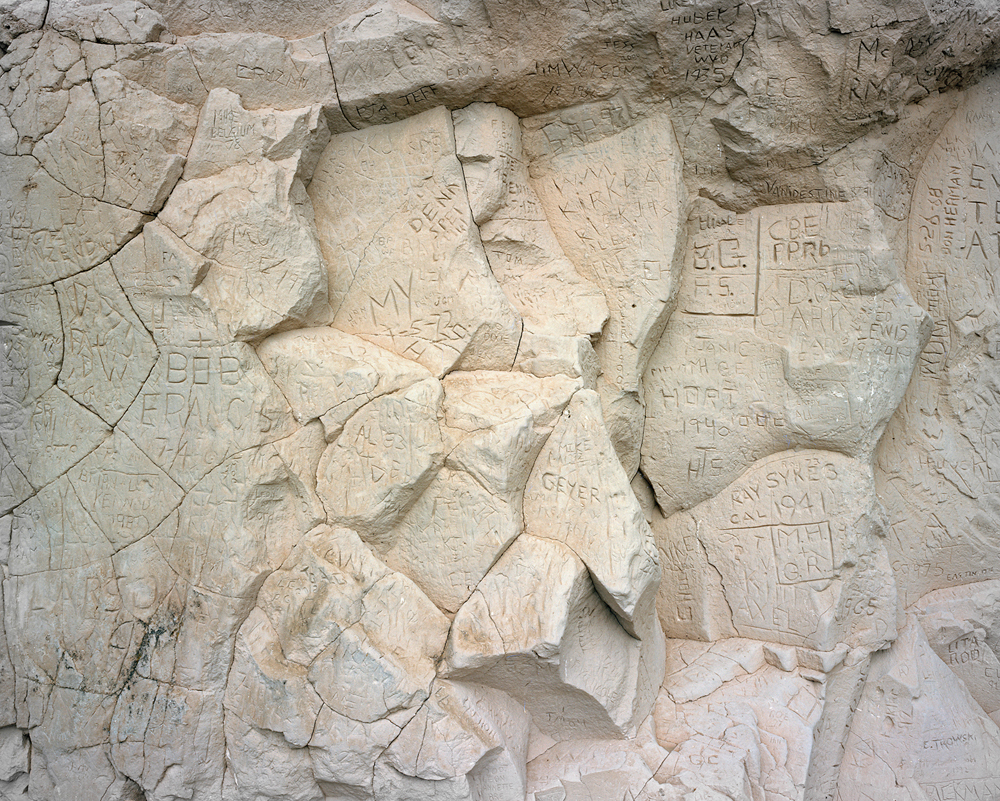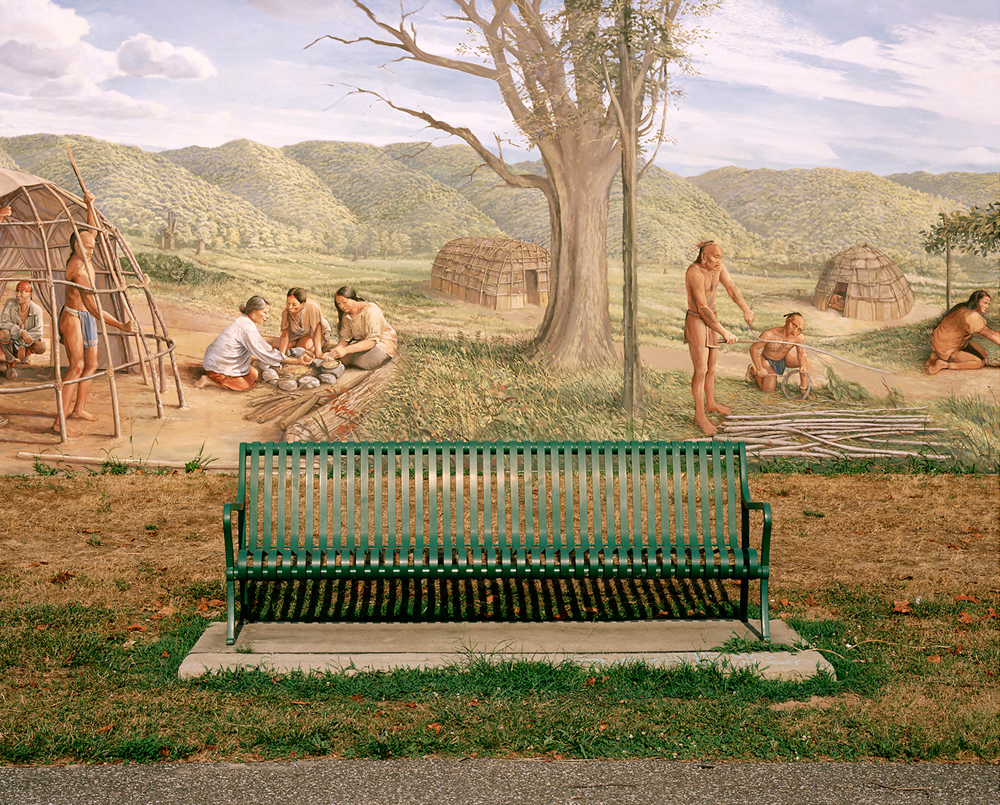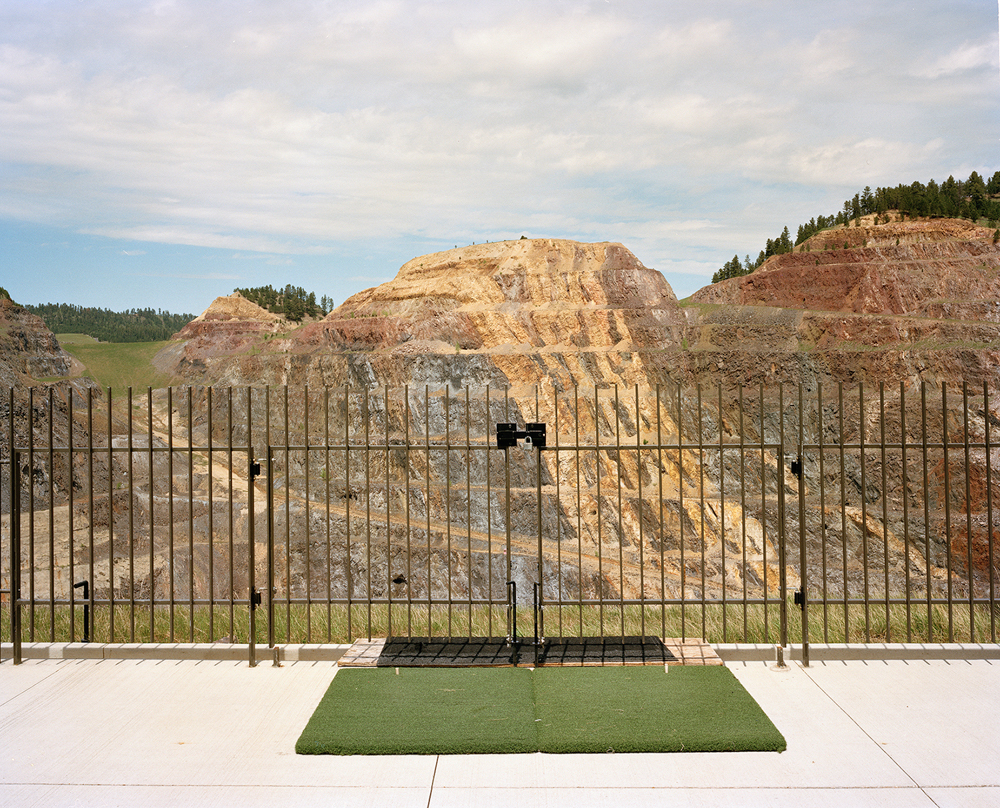In artistic terms, a vanishing point is an optical illusion. The lines receding into the distance are meant to create depth on an otherwise flat surface. However, they never really disappear. The further you follow them the deeper it takes you into the scene.
Shortly after moving to Morgantown, West Virginia, I discovered that a local shopping center had been built upon an 800-year-old sacred burial ground and village site associated with the Monongahelan culture. I’d frequently shopped at the Center and this new revelation transformed my understanding of the landscape and place I called home. Reflected in the scene in front of me was an ancient, spiritually important, and hallowed landscape clouded by the tangible constructions of modern Western culture. I was compelled to photograph the site and the resulting image sparked a decade-long project exploring a sometimes dark and seldom told account of American history.
In the name of Manifest Destiny, Westerners expanded the reach of settler colonialism across America, claiming the land was theirs by Divine right. Modernization and what settlers deemed to be “civilization” swept across the country, nearly eradicating entire Native cultures in their path. As a white, non-Native citizen of this country, I grapple with the legacy of my ancestors and my own indirect impact on Indigenous Americans. However, my intentions with the Vanishing Points project are not about righting the wrongs of history. I’m merely trying to reckon with my own physical and spiritual presence on the land I call home, while attempting to unwind, or address our collective cultural amnesia.
In Vanishing Points, I locate and photograph significant sites of Indigenous American presence, including ancient earthworks, sacred landforms, documented archaeological sites and contested battlegrounds. The sites I choose to visit, and photograph are literal and metaphorical vanishing points. They are places in the landscape where two lines, or cultures, converge. While visiting these sites, I reflect on the monuments our modern culture will presumably leave behind and what the archaeological evidence of our civilization will reveal about our time on Earth.
Although these pictures record sites of historical importance or trauma, Vanishing Points is not just about the past. It’s about re-considering these events in the present and the future. It’s about who we have been, who we are now and who we can become.
Some of the photographs in this project were made on the lands of sovereign Native nations, including the Apsáalooke (Crow), Diné (Navajo), Oglala Lakota (Sioux), Miiti Naamni (Mandan), Awadi Aguraawi (Hidatsa), and ačitaanu’ táWIt (Arikara). Many of the other photographs were made on Indigenous lands that were ceded to, seized, or stolen by the United States government through treaty and federal statute.
Please consider donating to organizations that protect and support sacred sites and Indigenous sovereignty, such as:
Association on American Indian Affairs: https://www.indian-affairs.org/
Cultural Survival: https://www.culturalsurvival.org/
Indian Land Tenure Foundation: https://iltf.org/
Indian Law Resource Center: https://indianlaw.org/donate
Indigenous Environmental Network: https://www.ienearth.org/
Native American Rights Fund: https://www.narf.org/
Native Governance Center: https://nativegov.org/
Native Nations Institute: https://nni.arizona.edu/
Michael Sherwin is an artist currently based in the Appalachian Mountains of northern West Virginia.
From an early age, he found inspiration in the phenomena of the physical world and has spent most of his life exploring and seeking wild places, including nine years in the American West. Using the mediums of photography, video and installation, his work explores scientific, cultural, and historical interpretations of the natural world.
He has won numerous grants and awards for his work and has exhibited widely, including recent exhibitions at the Atlanta Contemporary Arts Center, Morris Museum of Art, Huntington Museum of Art, and the Center for Fine Art Photography among others. Reviews and features of his work have been published in The Washington Post, BuzzFeed News, Hyperallergic, Lenscratch, National Public Radio, Stuttgarter Zeitung in Germany, L’Oeil de la Photographie in France, and Esquire Russia.
His work is included in several permanent collections including the Archive of Documentary Arts in the David M. Rubenstein Rare Book and Manuscript Library at Duke University, the Cincinnati Art Museum, The Cleveland Museum of Art, and the University of New Mexico Art Museum. In July 2021, Sherwin published his first major monograph, Vanishing Points, with Germany-based publisher, Kehrer Verlag. He has also lectured extensively about his work at universities and conferences across the nation. Sherwin earned an MFA from the University of Oregon in 2004, and a BFA from The Ohio State University in 1999. Currently, he is an Associate Professor of Art in the School of Art and Design at West Virginia University and Coordinator for the Photography and Global Positioning Studies programs.
© Text and pictures by Michael Sherwin
